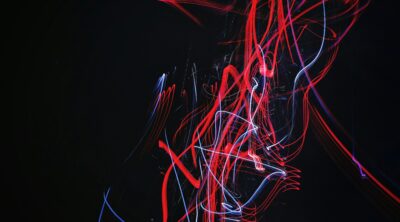< Back to all posts
AI in Video Production: Potential and Limitations
Artificial intelligence systems, especially splashy new generative AI tool releases, have become the center of attention in the tech world. If your company creates its own visual content, you may have already considered using AI in video production. However, despite the powerful potential on display, AI in video isn’t an automatic match.
Making the most of generative AI technology to create video — or anywhere in the video production workflow — is a balancing act. You’ll need to focus on taking maximum value from the technology while avoiding its notable challenges and limitations.
Rather than overrating an AI tool based on its hype or underrating it due to hesitance to change, it’s best to take a clear-eyed look at the technology’s current state. Taking inventory of what AI can and can’t do can help you see its real potential for your business.
AI’s Creative Role in Video Production
What exactly is AI for as a video production tool? This is the current debate within the creative arts field, as well as at companies of all kinds. While demonstrations of each new AI video tool can seem like “magic,” offering up capabilities including spontaneous video creation based on written prompts, these generative AI offerings aren’t presently capable of creating longer, more complex clips.
Content produced with AI video generator systems tends to look somewhat uncanny and unpolished, and visual continuity between shots is an especially weak spot. Even when it comes to scripting, text generators tend to have length limits, which has stopped them from generating entire scripts.
Turning your brand over to generative AI content can be a bad choice, aesthetically. Video content serves as the face of your brand, and using the current generation of unpolished AI video production tools to represent the company may have unintended consequences.
While the seeming magic of generative AI can be an awkward fit for your brand, there are quality-of-life workflow improvements that can come from AI-powered tools. Smaller production tasks, from AI video editing assistance to first-pass subtitling and descriptive audio generation could be good uses for AI. While generative using an AI algorithm may fail to produce results when dealing with longer finished projects, these tools can be invaluable for brainstorming, outlining and ideation.
See where AI fits into the production workflow and learn what kinds of results AI can deliver.
The Legal and Cultural Sides of AI for Video
Some of the biggest questions around using AI don’t come down to processing horsepower. For example, there are legal questions about how generative AI algorithm solutions take in data and use it to fuel their calculations. The visuals generated by AI systems come from an amalgamation of works, many of which are copyrighted and used without permission.
Generative AI is raising questions in a variety of legal areas, such as when it’s acceptable to use an individual’s likeness in for-profit content. Committing too hard to the technology now could lead to long-term issues if the legal picture changes in the next few years.
There’s another issue closely tied to the legal questions: public disapproval and backlash. When brands or creators produce AI-generated content — for instance, when bands produce videos using generative AI or studios employ the technology for elements of TV shows or movies — the reaction is often highly negative.
A pattern has emerged in the early years of generative AI use. When a content creator sees work being generated with minimal human interaction, potentially using their or their peers’ work as fuel, they bring negative attention to the results. The resulting controversy can leave a lasting stain on a brand’s reputation.
These headwinds show that AI may not be best suited to forward-facing use. Behind-the-scenes technology integration, enhancing workflows and easing production while prioritizing human creativity, is a more straightforward approach for video production efforts today.
As with any other decision in a corporate video creation strategy, the ultimate determinant of success is the audience’s reaction. Efforts that build a company’s reputation and draw positive attention are useful tactics for marketing and outreach, while others may do more harm than good. Assessing AI use through this lens can help you use it where it will have an optimal impact.
Learn about another AI warning sign: guarding against potential harmful uses of AI by threat actors.
Embracing Technology Intelligently in Video Production
One of the best ways to quickly onboard any new technology is to work with experts on your video strategy. These third-party contributors, specializing in content creation, will be versed in the latest artistic and technical breakthroughs, helping your organization stay up to date with minimal challenges.
Crews Control’s teams are made up of long-tenured video professionals who have integrated many new technological breakthroughs into their workflows. These experts can become key collaborators on your video strategy, using AI video production tools and related technology where it makes the most sense.
For much more on overcoming the challenges of AI as a video production tool, check out our eBook.







Interesting points on AI’s evolving role in video production! For those looking to experiment with text-to-video tools, this resource offers a seamless way to convert text prompts into engaging videos—perfect for quick ideation and storytelling.